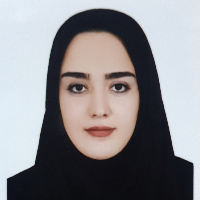Comparison of the effect of citrus aurantium honey with phenytoin oint-ment on wound healing in rats
In this experimental study, 32 rats were anesthetized with 2% ketamine and 5% xylazine, ip. Then a shear wound was created on the back of each animal, measuring one cm2 in full thickness. Mice were divided into negative control, positive control (osrine), spring orange 75% and phenytoin 1% groups. In the experimental group, 2 g of ointment was applied twice a day as a thin layer on the surface. Wounds were monitored for 14 days. Sampling was performed for histopathological examinations on days 4, 7, 10 and 14 after wounding. Digiser software was used to measure wound shrinkage. In this study, the rate of angiogenesis, fibroplasia, epithelial formation, collagen deposition and infiltration of inflammatory cells were evaluated. On microscopic examination on day 4, epidermal and dermal damage was observed in the presence of blood clots and infiltration of inflammatory cells in the treated group and budding tissue forming in the 75% spring orange and phenytoin 1% honey groups. On day 7, bud tissue was detectable in the treated groups. In the group treated with honey, 75% of the cell density of bud tissue was lower than the other groups and collagen synthesis was higher than the other groups and the developing epithelial tissue was also detectable. On day 10, the density of inflammatory cells, blood vessels, and fibroblasts in bud tissue decreased. In the negative and positive control groups, 75% of the bud tissue appeared younger than honey and 1% phenytoin. Germ tissue in honey group 75% and phenytoin 1% showed lower cell density and higher collagen synthesis. In the honey group, 75% of the formation of epithelial tissue was more advanced compared to the 7th day. On the 14th day in the honey group, 75% of the mature bud tissue appeared to have low cell density and collagen fibers were thicker, regular and more mature than the other groups, and the covering tissue completely covered the wound surface. In the study of wound contraction, the results showed that the group treated with honey 75% had a higher improvement than phenytoin 1%, which was statistically significant.
- حق عضویت دریافتی صرف حمایت از نشریات عضو و نگهداری، تکمیل و توسعه مگیران میشود.
- پرداخت حق اشتراک و دانلود مقالات اجازه بازنشر آن در سایر رسانههای چاپی و دیجیتال را به کاربر نمیدهد.



